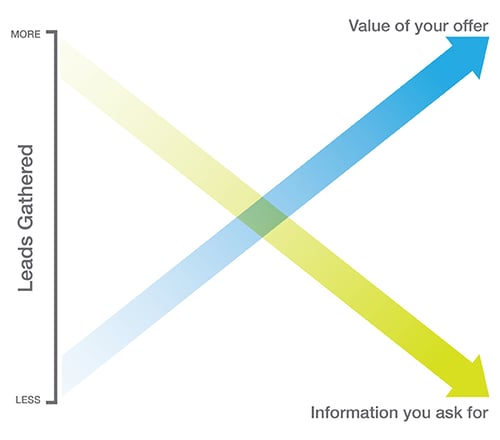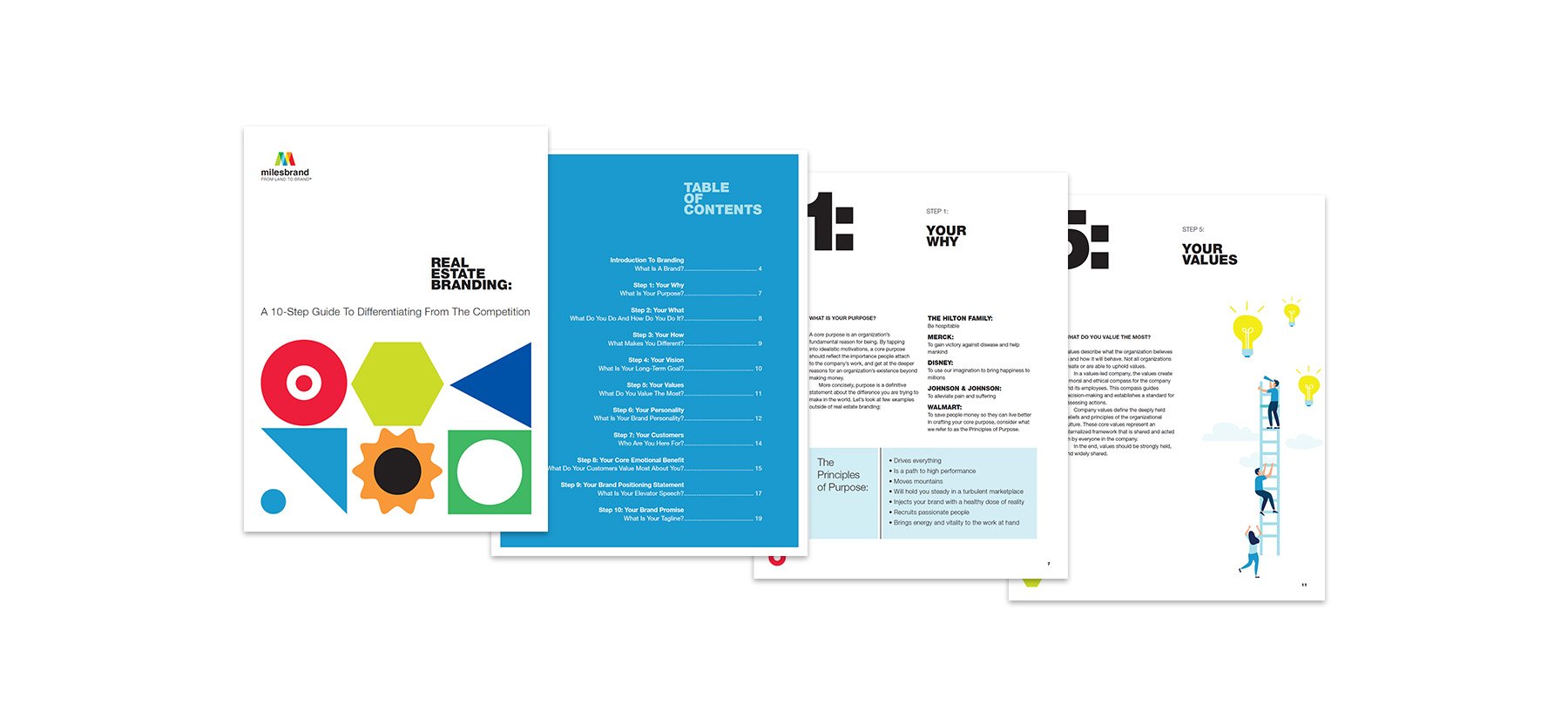February 02, 2020
Real Estate Landing Pages – Why They Work and Strategies for Success
In 2020, real estate lead generation is largely an online game.
Sales centers and closing rooms now operate as strongly in virtual space as they have traditionally in the physical world.
And in this online game, there’s one big rule to follow: use great landing pages.
This guide is about all things landing pages, particularly as they relate to real estate. Here’s what we’ll be covering:
- What a landing page is – and isn’t.
- Why you should be using them.
- What makes a highly converting landing page.
- And finally, how to further optimize them.
Let’s get right into it.
What is a landing page?
A landing page is a single page on your website, built for a single purpose – most often, to capture leads.
The name is unsurprisingly derived from the journey a prospect takes to get there: they see your ad, click on the ad, and then land on your page.
Unlike your homepage, a landing page leaves no chance for distraction. The user is not encouraged to click around and explore the website, as they would on a homepage.
Instead, they are guided through the page by a perfectly clear, direct offer (which they first learn about in your ad or promotion).
Why you want a landing page
At the heart and soul of landing pages is a concept known as “information first marketing”.
In industries like real estate – known for longer sales cycles and higher price points – offering high-value information is a necessary first step in nurturing leads all the way down to closing.
Think about it this way: If your primary offer is a new home, your initial offer should be something much, much more affordable.
This is because capturing a lead with a landing page really is your first meaningful engagement with a customer – you advertise something useful or interesting, and they access it with information.
It’s the beginning of what should always be a value-exchanging relationship.
Now, you might be wondering, “What valuable information do I have to offer?”
To help get you started, here are a few real estate-specific examples to consider:
- Digital or physical brochure – If you’ve designed a piece of collateral that showcases your homes and community, you can typically offer it via download or email in exchange for the user’s basic information.
- Access to events – Landing pages work great for upcoming home tours or open houses. In this case, the landing page functions as “registration” for the event.
- Homes lists – If you have a robust list of available homes, you can try implementing an email capture prior to granting complete access to the list.
- Promotions – Sometimes, offers can be more tangible than informational – prize giveaways for touring homes, pricing guarantees, and so on. To be eligible for the promotion, the prospect first fills out their details.
- Articles and ebooks – Perhaps you already have useful knowledge packaged up into a blog or ebook you could offer. For example, if someone wrote an ebook on “10 Things First Time Home Buyers Get Wrong”, they could probably offer it for free download with a sign up.
The landing page formula for success
Because real estate landing pages can work well at any stage of development, it’s best to plan your desired outcome accordingly.
Begin by setting a single goal, and consider: what details are you aiming to gather from your landing page visitors? What can you offer them in return, and is it useful enough for what you’re asking?
Here, it’s good to remember that the more customer details you request, the better your offer should be.
For example, access to a homes list might not be attractive enough for visitors to share their name, email, and physical address. Whereas registration for an open house event with prize giveaways could warrant all of the above, and more.
Typically, forms that require more information will result in fewer leads gathered – but those that do convert are higher-qualified leads. And once again, only higher-value offers justify longer forms.

Working with those two variables, decide on exactly what you want and what you will offer (for each landing page you create).
Real Estate Landing Pages Framework
Again, use clarity and directness as your guiding light for building real estate landing pages.
The good news is that clarity is best created with simple visuals and brief, persuasive copy.
Keep that in mind as we move through our recommended guideline for an effective landing page:
1. The Incentive
Above the fold – front and center – should be a short, powerful headline.
It doesn’t need to explicitly describe your offer – its primary job is to create curiosity.
Because this headline is likely the first thing a visitor will see on your page, it’s the first possible point-of-failure.
The best way to avoid this pitfall is to turn up the empathy, and consider the journey your user took to get here.
To the degree you’re able, design their journey to have four general phases:
- Getting attention
- Stimulating interest
- Building desire
- Asking for an action
Phase 1 – Get their attention: Chances are, you’ll be promoting your landing page in some type of outreach or ad campaign. In that case, the initial attention is mostly earned with your ad’s creative and copy. These are things you can split test and iterate on, using metrics such as click-through rate to make sure it is in fact getting attention.
Once dialed in, a good ad and offer will get your audience’s attention. But for everything else, there’s the landing page.
Phase 2 – Stimulate interest: Your page’s top headline should be dedicated entirely to this phase. Whatever it was in the ad that got their attention needs to be complimented by this headline, furthering the user’s interest in your offer.

Non real estate, but note the headline: It uses creative language to favor curiosity over specifics.
2. The Value Proposition
At this point, your ad has caught your prospect’s attention – they click through. And then immediately on arrival to your page, they’ve read a main headline that is both consistent with your ad’s offer and interesting.
It’s right about now that a user might pause for a moment and ask themselves, “What’s really in it for me?”
This is the question you need to answer. And it’s best done with supporting copy – perhaps only 2-4 sentences – that sit just below your headline. Welcome to Phase 3.
Phase 3 – Building desire: Follow up your headline with a brief paragraph that explains the benefit of your offer. Better yet, describe the emotional benefit. This paragraph is where you are proposing your offer’s value – Why should they want it? Why can’t they live without it?
3. Reconfirm the incentive and ask for action
So far, we have:
- Earned your prospect’s attention to get them to your landing page
- Presented an interest-building headline
- Added detail and described the value of the offer
What follows is the third and final step in our guideline: to reiterate the incentive and call your user to action.
Just prior to your lead form, include a few additional snippets of copy that restate 1) the incentive hinted at in your headline and 2) the benefits described in your value proposition.
If you’ve covered each step adequately, your user now has little doubt about the offer and can’t wait to click your call to action – provided you tell them exactly what you want them to do.
Bonus: Optimizing your landing page for conversions
The above guideline is intended to be just that. Chances are, your offer will perform best with slight variations of and additions to our guideline.
If you think a nice list of bullets will help, you’re probably right – try adding them. The same applies for customer testimonials, and all the other landing page classics.
Now, despite best efforts, you might not get your landing page 100% right on the first pass. And that’s perfectly fine.
Because here is where the secret weapons of real estate landing pages come into play: testing and optimizing.
Let’s start with a few tips on optimizing.
Optimizing Landing Pages
Use clear and well-designed calls to action – Should your button say “Register” or “Click here?” What color should it be? These are things to test, but whether it’s your first or fifteenth iteration, always aim for clarity and professional design.
Use one central visual – Landing pages tend to perform well when they stick to a single, above the fold hero image. Scrolling down, you can consider adding more pictures or design elements, but try to keep it simple up top.
Mobile-friendliness – 89% of home buyers are using mobile devices at some point in their home search. You’ve probably heard it a thousand times, but be certain your landing page is as functional and attractive on mobile as it is on desktop.
Prepare to follow up – Once a lead converts on your landing page, you should have a plan for a timely follow up. Perhaps they immediately receive a confirmation email, or enter a built-out nurture campaign. The point is: as you grow leads, know exactly what to do with them.
Track everything – Without incoming data, you’ll be flying blind. Leverage tools such as the Facebook Pixel, Google Analytics, and Google Ads Manager to see the story the numbers are telling you and keep track of every visitor.
Speaking of data...
Testing Real Estate Landing Pages
“Always be testing.”
It’s an old platitude that just so happens to be extremely good advice.
While you’re promoting your landing page, you’ll be keeping track of metrics that together define how well the landing page is working.
The typical indicators are numbers such as click-through rate, time-on-site and conversion rate, to name a few.
Even if an ad and landing page are performing well, split testing suggests that there is always room for improvement. And there usually is.
For example, what if changing the call to action copy moves your conversion rate from two percent to five? What if using a new image boosts click-through rates significantly?
These are the types of questions we ask in the split testing phase.
So move through your entire user’s journey and identify each variable of content along the way (ad creative, ad copy, landing page headline, image, supporting copy, etc.)
Then, A/B or split test by changing one variable at a time while noting changes to your data and performance.
Before long, you’ll have a clear picture of what works best, and where.
That's a wrap
With any luck, we’ve managed to leave you feeling more prepared and inspired to get out there and start building real estate landing pages of your own.
If you have any questions or thoughts, please don’t hesitate to comment below or reach out directly.












